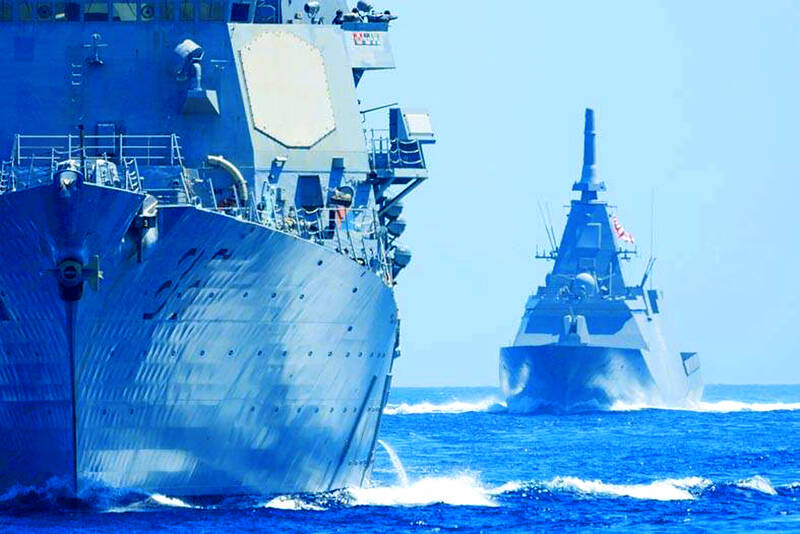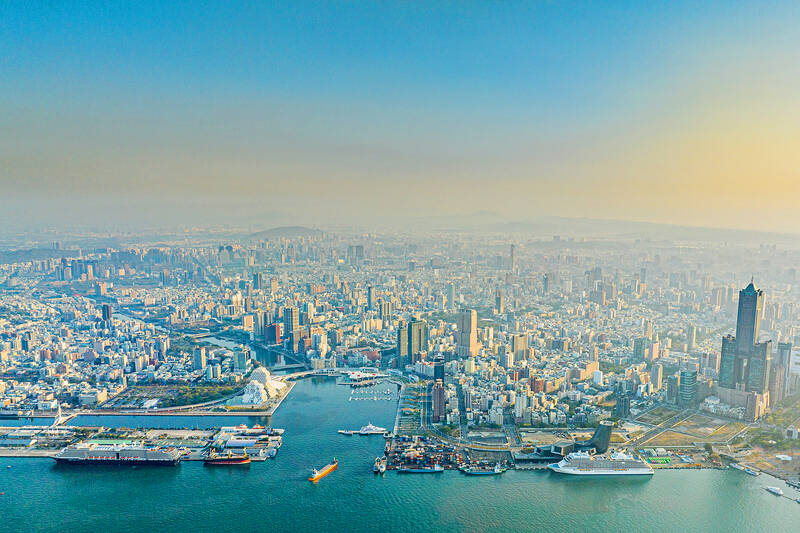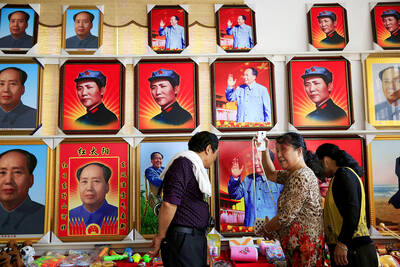It’s always a pleasure to see something one has long advocated slowly become reality. The late August visit of a delegation to the Philippines led by Deputy Minister of Agriculture Huang Chao-ching (黃昭欽), Chair of Chinese International Economic Cooperation Association Joseph Lyu (呂桔誠) and US-Taiwan Business Council vice president, Lotta Danielsson, was yet another example of how the two nations are drawing closer together. The security threat from the People’s Republic of China (PRC), along with their complementary economies, is finally fostering growth in ties. Interestingly, officials from both sides often refer to a shared Austronesian heritage when arguing for greater cooperation.
According to the Ministry of Foreign Affairs (MOFA), the government is working on “cooperation between Taiwan and the Philippines in such areas as ports, shipping, new energy, smart agriculture and semiconductors.” The Philippines is a top 10 trading partner. Since Manila kow-tows to the PRC and its one-China principle, it does not recognize Taiwan’s status under international law. However, in April Manila eased restrictions on government interactions in order to promote economic ties.
As various media have reported, defense links between Manila and Taipei are also broadening.

Photo: AP
“To be very practical about it, if there is confrontation over Taiwan between China and the United States, there is no way that the Philippines can stay out of it simply because of our physical, geographic location,” President Ferdinand Marcos Jr. of the Philippines has stated. Security officials in the Philippines have said that since attempts to lower tensions with Beijing have failed, they are “entitled” to pursue closer relations with Taiwan.
Taiwanese military observers attended the US-Philippines exercises in April and May, while military officials from the Philippines have visited Taiwan, arriving as tourists, according to a recent Japan Times report. The Philippines has been beefing up its defense infrastructure in northern Luzon, near Taiwan. The two nations have also conducted joint coast guard patrols in the Bashi Channel between Taiwan and Luzon, according to media reports.
NSP+

Photo courtesy of Wikimedia Commons
President William Lai (賴清德) in March launched a revamped New Southbound Policy (NSP), the NSP+. It expands and deepens the NSP with six proposed NSP+ corridors. The first three corridors are digital technology and semiconductors, health and resilience. The latter three corridors emphasize people-to-people relations and civil society, including a think tank corridor, a corridor for non-governmental organizations and a youth corridor. People to people relations are booming: the Philippines was the number 1 southeast Asian source last year for tourists to Taiwan.
In pursuit of this, Taiwan’s representative to the Philippines, Wallace Chow (周民淦), has been pushing greater cooperation between the two countries through a series of articles emphasizing Taiwan’s role in promoting resilience.
“Taiwan is willing to share with the Philippines its operational, technology-backed, community-rooted expertise,” he wrote in BusinessWorld Online.
Photo: Reuters
This effort is bearing fruit, according to an assessment of Taiwan’s soft power in the Philippines by Reymund Flores, a Philippines-based scholar, published by the National Bureau of Asian Research.
“Taipei’s initiatives have been largely effective in building a positive image of Taiwan among Filipinos,” he observed, noting that in the opening months of the pandemic, Taiwan was among the first countries to donate surgical masks and protective gowns to the Philippines.
Semiconductors may not leap to mind when the Philippines is mentioned, but assembly and testing services are growing there. Citing Moody’s, an article in the Philippine-based Politiko on Manila-Taipei cooperation observed that semiconductors were 32 percent of exports last year. Officials also cite the Philippines’ steady economic growth (5.6 percent last year) and young demographic profile (median age of 25.7) as incentives to increase trade.
The six corridors proposed by the Lai administration in March are components of the Taiwan-Philippines Economic Corridor currently being promoted by the government. That is typified by events such as the smart harbor forum slated for next month, which brings together representatives from the Port of Kaohsiung and the Port of Subic Bay in the Philippines. That effort in turn runs parallel to the larger Luzon Corridor of the US, Philippines and Japan, initiated last year.
PORTS AND SECURITY
The ports initiative is security-related. Several ports in the Philippines were targeted last year by cyberattacks that Filipino researchers think originated in the PRC. The attacks disrupted their container and navigation operations. Engineers from both countries in May began joint testing of an electronic system that monitors ocean and shipping conditions in Davao Bay on Mindanao. The next phase of cooperation involves using undersea drones for surveillance of the ocean floor in the Bashi Channel, one of the most important routes for telecommunications cables in Asia.
The growing connection between the two countries is mirrored in the way the world is using links with the Philippines to support regional defense efforts that may address a Taiwan scenario. Long-time Asia watcher Michael Mazza wrote of the world’s growing development of indirect links with Taiwan andㄩㄟ its defense and “the Philippines is emerging as the center of gravity for these efforts.” Mazza instanced a number of recent agreements and negotiations between the Philippines and nations such as Japan, Australia, South Korea and Canada that point to Manila’s pivotal role.
Because Taiwan is nervous about support from US President Donald Trump, it has been pursuing better relations with the EU. At the same time, Mazza says, the EU is putting a hand in via Manila as well. Paris and Manila began negotiating closer cooperation in June. The UK and the Philippines in January last year inked a Memorandum of Understanding on Defense Cooperation. This summer London followed by indicating interest in negotiating a Status of Visiting Forces agreement, according to Mazza.
The strong possibility of PRC strikes on the Philippines (the US has bases there) in the event of a PRC invasion of Taiwan implies that the 1951 US-Philippines Mutual Defense Treaty will be triggered. That would require Washington to intervene even if the US government did not want to defend Taiwan. This in fact gives Taipei some incentive to ensure that the conflict spills over to the Philippines and Japanese territory in the event Washington does not want to get involved with a Taiwan invasion. This will make it more difficult for the PRC to confine the war to Taiwan alone, increasing the odds that any conflict quickly becomes a regional war.
While many focus on how the Philippines will be dragged into a war over Taiwan, few have stopped to consider that the opposite could also occur. An incident of PRC aggression against Manilla, responded to by US forces, could pull in Taipei, which would likely be supporting the US.
Beijing protested to Manila in July, lodging “stern representations” over its burgeoning links with Taipei. The PRC could easily have better relations with the Philippines, where it has vast soft and hard power, but luckily for Taiwan, it is more interested in grabbing uninhabited shoals.
Notes from Central Taiwan is a column written by long-term resident Michael Turton, who provides incisive commentary informed by three decades of living in and writing about his adoptive country. The views expressed here are his own.

Taiwan can often feel woefully behind on global trends, from fashion to food, and influences can sometimes feel like the last on the metaphorical bandwagon. In the West, suddenly every burger is being smashed and honey has become “hot” and we’re all drinking orange wine. But it took a good while for a smash burger in Taipei to come across my radar. For the uninitiated, a smash burger is, well, a normal burger patty but smashed flat. Originally, I didn’t understand. Surely the best part of a burger is the thick patty with all the juiciness of the beef, the

The ultimate goal of the Chinese Communist Party (CCP) is the total and overwhelming domination of everything within the sphere of what it considers China and deems as theirs. All decision-making by the CCP must be understood through that lens. Any decision made is to entrench — or ideally expand that power. They are fiercely hostile to anything that weakens or compromises their control of “China.” By design, they will stop at nothing to ensure that there is no distinction between the CCP and the Chinese nation, people, culture, civilization, religion, economy, property, military or government — they are all subsidiary

Nov.10 to Nov.16 As he moved a large stone that had fallen from a truck near his field, 65-year-old Lin Yuan (林淵) felt a sudden urge. He fetched his tools and began to carve. The recently retired farmer had been feeling restless after a lifetime of hard labor in Yuchi Township (魚池), Nantou County. His first piece, Stone Fairy Maiden (石仙姑), completed in 1977, was reportedly a representation of his late wife. This version of how Lin began his late-life art career is recorded in Nantou County historian Teng Hsiang-yang’s (鄧相揚) 2009 biography of him. His expressive work eventually caught the attention

This year’s Miss Universe in Thailand has been marred by ugly drama, with allegations of an insult to a beauty queen’s intellect, a walkout by pageant contestants and a tearful tantrum by the host. More than 120 women from across the world have gathered in Thailand, vying to be crowned Miss Universe in a contest considered one of the “big four” of global beauty pageants. But the runup has been dominated by the off-stage antics of the coiffed contestants and their Thai hosts, escalating into a feminist firestorm drawing the attention of Mexico’s president. On Tuesday, Mexican delegate Fatima Bosch staged a